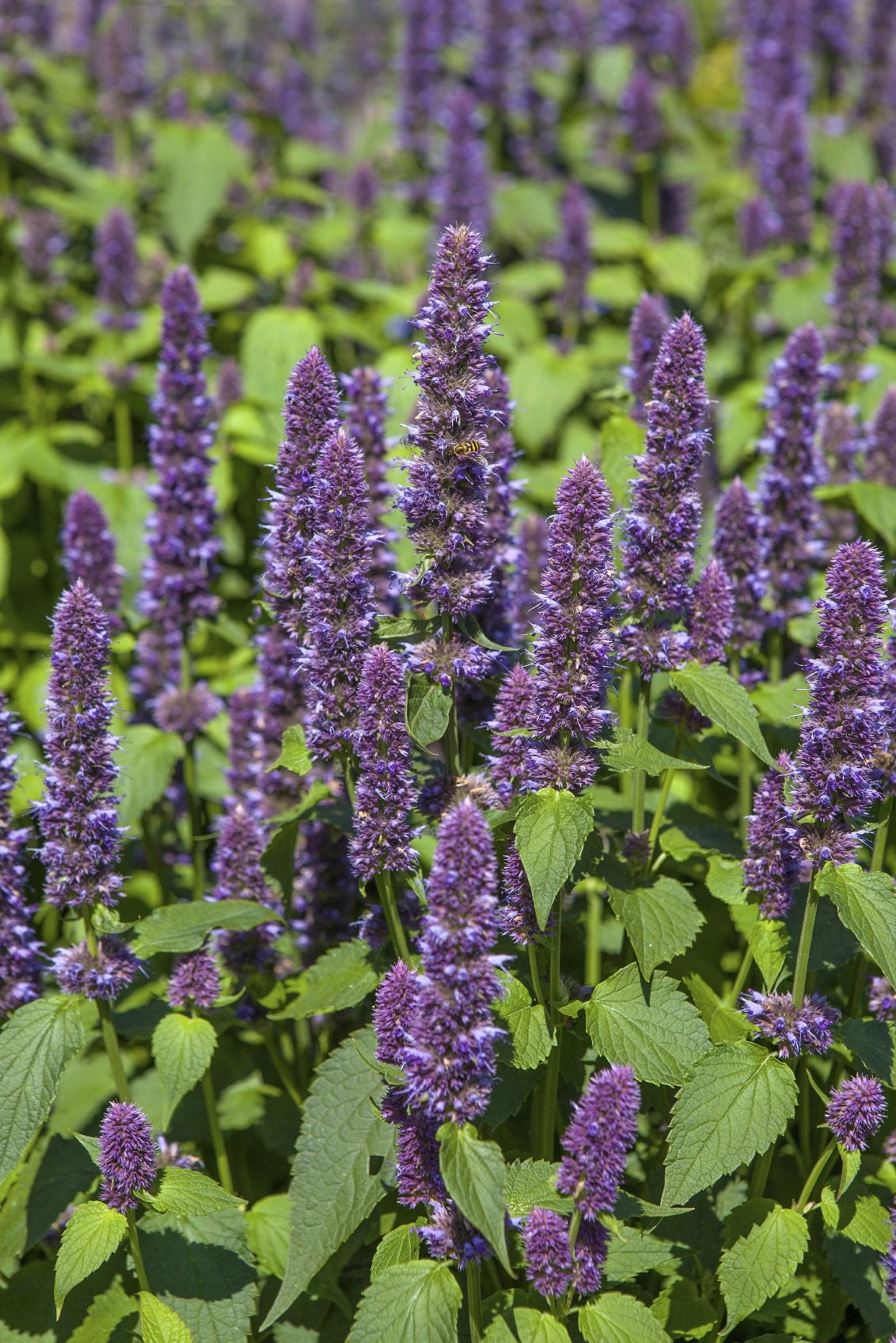Cutting Back Anise Hyssop: How And When To Prune Agastache


Agastache, or anise hyssop, is an aromatic, culinary, cosmetic, and medicinal herb. It has a long history of use and provides a splash of the deepest blue across the perennial garden. Anise hyssop also adds a light licorice scent to the garden patch. This easy-to-grow herb gets woody square stems and may grow up to 3 feet (1 m.) tall. It needs no special attention and is, in fact, fairly self-maintaining once established. Light trimming will keep the plant looking its best. In this article, we will discuss when and how to prune Agastache for the best results and a healthy plant.
Agastache Pruning Info
Many of our native perennial herbs are designed by nature to thrive without any human intervention. That being said, even a hardy specimen like anise hyssop can benefit from some minor meddling. Pruning anise hyssop when it is young in early spring will help force a bushier plant. Cutting back anise hyssop in late winter will allow the fresh, new stems to come up unimpeded. The plant can also do quite well without any trimming but, if you choose to cut, know when to prune Agastache for the most effective maintenance experience. In most regions of North America, anise hyssop will brown and die back for winter. You may choose to leave it just as it is with the addition of a bit more mulch around the root zone, and no harm will come to this hardy plant. You may also want to remove the dead plant material just to tidy up the area and allow the plant's new growth to shine through in spring. The choice is yours and neither is strictly wrong or right. It just depends upon what kind of landscape you like to maintain. Pruning anise hyssop will enhance its appearance, force new compact growth, and may increase blooms if deadheaded.
When to Prune Agastache
Herbaceous plants do best if trimmed back in early spring just as new growth is about to appear. Anise hyssop can also be deadheaded and shaped lightly from spring until midsummer. Suspend any trimming thereafter, as it may force tender, new growth that can be damaged when cool weather appears. Such light pruning will allow you to remove spent flowers and prevent seed heads and prolific self-seeding. Dig up the plant and divide it every three to five years to help prevent center die-out and rejuvenate the plant.
How to Prune Agastache
How to prune Agastache is just as important as when to prune it. Always use sanitized pruning shears or loppers that are nice and sharp. To deadhead anise hyssop, simply cut off the dead flowering stems. If you wish to force new growth and shape the plant, cut back up to 1/3 of the woody material. Make cuts at a slight angle to force moisture away from the stem. Remove plant material just above a viable bud node. Heavily cutting back anise hyssop to rejuvenate the plant can be done by removing the stems to within 6 to 12 inches (15-31 cm.) from the ground.
Sign up for the Gardening Know How newsletter today and receive a free copy of our e-book "How to Grow Delicious Tomatoes".

Bonnie Grant is a professional landscaper with a Certification in Urban Gardening. She has been gardening and writing for 15 years. A former professional chef, she has a passion for edible landscaping.